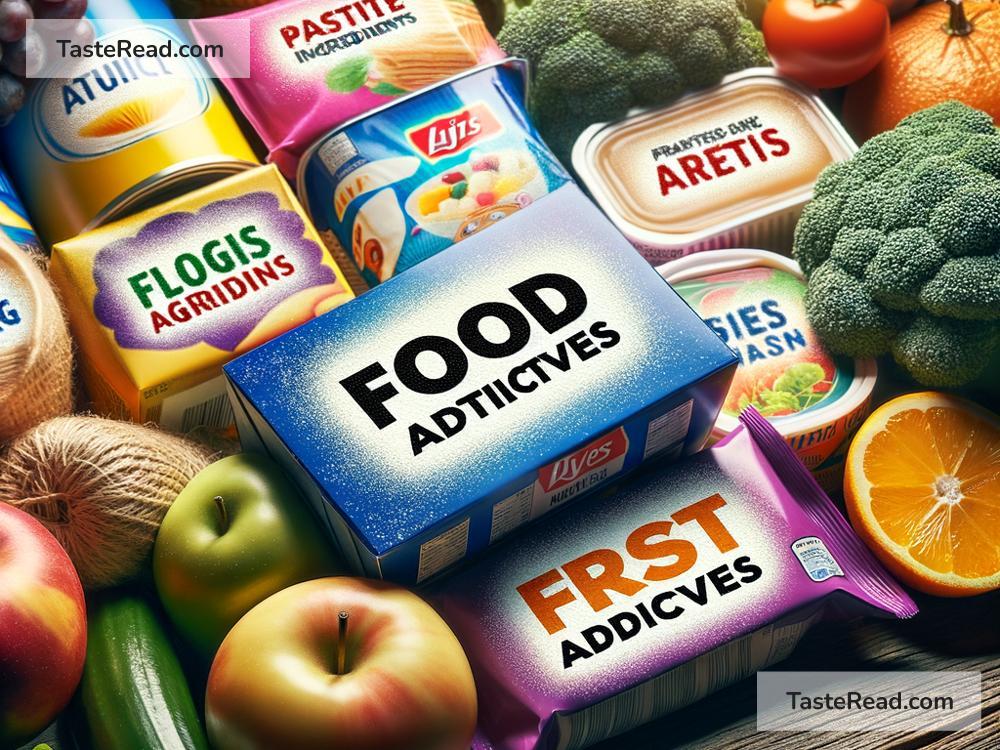Food Additives: What You Need to Know
Food is one of the most important parts of our lives. It gives us energy, helps us stay healthy, and brings us joy. But have you ever looked at the label on packaged foods and wondered what all those complicated words mean? Many of them are food additives. In this article, we’ll talk about what food additives are, why they are used, and whether they’re safe to eat.
What Are Food Additives?
Food additives are substances added to food to improve its taste, texture, appearance, or shelf life. Some food additives are natural, like salt, vinegar, or spices. Others are artificial, meaning they’re made in a lab. These additives can be flavors, preservatives, colors, or chemicals that change how food feels or looks.
For example, if you buy bread from the store, it often stays fresh for days. That’s because preservatives are added. Or when you eat bright-colored candies, the colors don’t come from fruits—they are usually made with food coloring.
Why Are Food Additives Used?
Food additives serve several purposes. Here are the most common reasons they’re used:
-
Preservatives: These help food last longer by preventing it from spoiling. For example, sodium benzoate and citric acid are used to keep snacks and drinks fresh.
-
Colors: Additives like food coloring make food look more appealing. Brightly colored desserts or drinks catch your eye, but these colors are often artificial.
-
Flavors: Flavor enhancers like monosodium glutamate (MSG) make food taste better. Artificial flavors mimic natural ones, helping manufacturers create variety in foods.
-
Texture Improvers: Emulsifiers, stabilizers, and thickeners are used to improve the texture of food. For example, they make ice cream smooth or keep ingredients from separating in salad dressings.
-
Nutrients: Sometimes additives are used to add vitamins or minerals to foods so they’re healthier. For example, breakfast cereals often contain added iron and vitamin D.
Are Food Additives Safe?
The safety of food additives is often debated. In many countries, food additives are regulated by government agencies. For example, in the United States, the Food and Drug Administration (FDA) studies and approves additives before they’re allowed in foods. In the European Union, food additives have to pass strict tests before they can be used.
Even though additives are tested for safety, some people worry about their long-term effects. For example, some artificial additives may cause allergic reactions in certain individuals. Others question if additives can lead to health problems like hyperactivity in children or diseases later in life.
Here’s a closer look at some food additives that have raised concerns:
-
Monosodium Glutamate (MSG): MSG is used to enhance flavor in processed foods. While most research suggests it’s safe for most people, some report feeling headaches or dizziness after consuming it.
-
Artificial Food Colors: Bright food dyes (like Yellow No. 5 and Red No. 40) have been linked to hyperactivity in children in some studies. These effects don’t occur in everyone, but parents may prefer natural alternatives.
-
Trans Fats: Some processed foods used to include trans fats as texture improvers. Unfortunately, these fats were linked to heart disease and are now banned in many countries.
If you’re worried about food additives, looking at ingredient labels can help. Many manufacturers now use words like “natural,” “no artificial flavors,” or “preservative-free” to help consumers make choices.
Tips for Choosing Foods with Minimal Additives
Not all food additives are harmful, but some people prefer to keep them to a minimum. Here are simple tips for choosing foods with fewer additives:
-
Read Labels Carefully: Pay attention to ingredient lists on packaged foods. The more ingredients you don’t recognize, the more likely the food has artificial additives.
-
Choose Whole Foods: Fresh fruits, vegetables, and whole grains rarely contain additives. Cooking meals at home gives you full control over what goes in your food.
-
Look for “Clean Labels”: Many brands now offer products labeled as “natural” or “organic.” These often use fewer artificial ingredients.
-
Moderate Processed Foods: Processed foods like chips, frozen meals, and candies usually contain more additives. Eating them occasionally, rather than every day, can reduce your intake.
-
Do Some Research: If you’re curious about a particular additive, look it up online from trusted sources. Knowing its purpose can help you decide whether to consume it.
The Bottom Line
Food additives make modern foods convenient, flavorful, and long-lasting. While most additives are considered safe for general use, it’s good to be aware of what you’re eating. Knowing how to read labels and choosing whole or minimally processed foods can reduce your exposure to artificial substances.
More people are paying attention to food additives these days, and food companies are responding by offering cleaner labels and natural options. As a shopper, you have the power to make choices that fit your preferences and health goals. In the end, balance is the key—enjoying the occasional treat while staying mindful of what’s in your food can help you lead a healthier, happier life.


